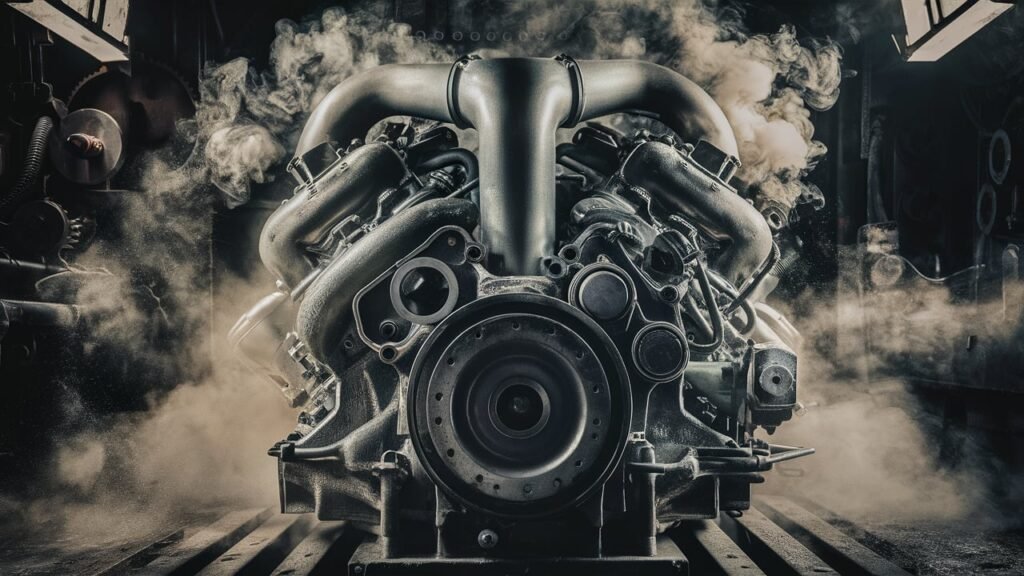
Understanding Brake Fluid Levels: A Comprehensive Guide
In the intricate tapestry of a modern vehicle’s safety mechanisms, car engine brake fluid emerges as a silent yet pivotal player. Defined as a specially formulated hydraulic fluid responsible for transmitting force within the braking system, the significance of this often-overlooked component cannot be overstated.
As the lifeblood that facilitates crucial functions like converting pedal pressure into stopping power, brake fluid embarks on an understated voyage through a labyrinth of pipes and cylinders to ensure swift responses when called upon.
While many aspects of a car’s performance are influenced by its various fluids and components, optimal brake fluid levels stand out as foundational pillars supporting efficient braking performance—a cornerstone of driving safety.
It is in the meticulous monitoring and maintenance of these levels that drivers unveil their commitment to not merely traversing roads but navigating them with unparalleled precision and care.
With each press of the brake pedal extracting trust from this seemingly mundane liquid, the bond between driver and machine solidifies in harmonious synergy—the artistry of controlled deceleration unfolding seamlessly on asphalt canvases worldwide.
Unveiling the intricacies behind this unassuming ally promises insights that transcend mere mechanical operation, delving into realms where vigilance translates into safeguarding lives through orchestrated harmony between man and machine.
Understanding Car Engine Brake Fluid.
Brake fluid is a vital component in a car’s braking system, essential for the transfer of force and pressure when we press the brake pedal. Specifically engineered for hydraulic systems, brake fluid transmits force generated by your foot on the pedal to the actual brakes.
It provides an incompressible medium that ensures there is no loss of pressure during this critical operation. In essence, brake fluid enables your vehicle to stop when you need it to, ensuring smooth and reliable braking performance.
There are several types of brake fluids available for vehicles, with the most common being DOT 3, DOT 4, and DOT 5. These different types have distinct compositions tailored to meet specific demands within various braking systems.

For instance, DOT 3 and DOT 4 are glycol-based fluids suitable for most vehicles due to their high boiling points. On the other hand, DOT 5 is a silicone-based fluid known for its hydrophobic properties that prevent water absorption and subsequent corrosion in certain specialized applications like classic cars or motorcycles.
Inadequate levels of brake fluid can lead to dire consequences affecting both braking efficiency and safety. Insufficient fluid can introduce air bubbles into the system, which compress under pressure, resulting in a spongy brake pedal feel and reduced stopping power.
Moreover, low levels could indicate a leak somewhere in the hydraulic system which not only poses a danger but also compromises overall performance. Therefore, regular checks and maintenance of proper brake fluid levels are crucial aspects of vehicle safety that shouldn’t be overlooked by any car owner or driver.
Factors Affecting Brake Fluid Levels.
Brake fluid levels in a car’s braking system can be influenced by various factors, both external and internal. External factors like temperature fluctuations play a crucial role in the performance of brake fluid.
Extreme heat can cause brake fluid to expand, potentially leading to brake fade, while cold temperatures may thicken the fluid, impacting how effectively it transmits pressure within the hydraulic system.
For instance, in regions with severe winter conditions, where temperatures drop significantly, drivers should be vigilant about potential changes in their brake fluid levels due to temperature-induced variations.
In addition to external factors, wear and tear resulting from prolonged usage can also affect brake fluid levels. Over time, components of the braking system can deteriorate or develop leaks that result in a loss of brake fluid. Identifying signs of low brake fluid levels is crucial for maintaining safe driving conditions.
For example, if you notice a spongy or soft brake pedal feel when applying pressure or hear unusual noises like squeaking or grinding when braking, these could indicate inadequate brake fluid levels or potential leaks that need immediate attention before they compromise braking efficiency.
Understanding how external elements and internal wear impact brake fluid levels is essential for ensuring optimal safety on the road. Monitoring these factors regularly can help prevent potential issues that might arise from fluctuations in temperature or wear-induced leaks within the braking system.
By being proactive and attentive to signs such as reduced braking responsiveness or visible leaks around components like master cylinders or calipers, drivers can address problems promptly and maintain sufficient brake fluid levels necessary for safe and efficient vehicle operation.
Monitoring Brake Fluid Levels.
Checking brake fluid levels in your vehicle is a crucial aspect of maintenance that helps ensure optimal braking performance. Different vehicles may have varying methods for monitoring brake fluid levels, commonly using either manual or electronic indicators.
In manual systems, there is typically a translucent reservoir that allows you to visually inspect the fluid level. On the other hand, many modern cars come equipped with electronic sensors that provide dashboard warnings when the brake fluid level is low. Understanding the specific monitoring system in your vehicle can help you stay proactive about maintenance.
To maintain safe driving conditions and prevent potential brake failures, it is essential to establish a regular schedule for checking and topping up brake fluid levels as needed. Regular inspection helps catch any discrepancies early on before they escalate into more significant issues.
By adhering to a routine maintenance plan, you not only enhance safety but also extend the longevity of your braking system components. Accompanying this with manufacturer-recommended brake fluid can further optimize performance and protect the hydraulic system from damage caused by using incorrect fluids.

Using the correct type of brake fluid specified by manufacturers is paramount in ensuring the reliability and efficiency of your vehicle’s braking system. Different types of brake fluids have distinct compositions that cater to various hydraulic systems’ needs, such as anti-lock braking systems (ABS) or traditional disc brakes.
Failure to use the right type can lead to reduced braking efficiency and potentially compromise safety on the road. By adhering to manufacturers’ recommendations regarding brake fluid selection, you guarantee compatibility with your vehicle’s components and maximize its braking capabilities while minimizing risks associated with inadequate fluid levels.
Maintenance Tips for Optimal Brake Fluid Levels.
When it comes to maintaining optimal brake fluid levels in your vehicle, following proper procedures is crucial. To begin, always refer to your vehicle’s manual to identify the correct type of brake fluid recommended by the manufacturer.
Different vehicles may require specific formulations to ensure compatibility and performance. Once you have the right brake fluid on hand, here are some essential maintenance tips to keep your brakes functioning smoothly.
Firstly, when refilling or replacing brake fluid, make sure the reservoir is clean and free from any contaminants that could compromise the quality of the new fluid. Any dirt or debris entering the system can lead to clogs or reduced braking efficiency.
Additionally, it’s important to avoid mixing different types of brake fluids as they have varying compositions that may not work well together. This could result in reduced braking performance and potential damage to the braking system.

Bleeding the brakes is another critical step in maintaining optimal brake fluid levels. This process involves removing air bubbles that may have entered the hydraulic system, ensuring consistent pressure transmission to each wheel for effective braking.
While bleeding brakes can be done manually with a partner pumping the brake pedal or using a specialized tool, following a systematic approach is key to achieving successful results. Properly bleeding the brakes at regular intervals helps prevent spongy pedal feel and maintains reliable braking performance.
Lastly, handling brake fluids requires precautions due to their corrosive nature. Always wear protective gear such as gloves and goggles when working with brake fluid to avoid skin irritation or eye damage. In case of skin contact, wash immediately with soap and water, and seek medical attention if necessary.
It’s also important to dispose of old brake fluid properly according to local regulations since it is considered hazardous waste. By taking these precautions and following maintenance guidelines diligently, you can ensure that your brake system operates efficiently and contributes to safe driving conditions for you and other road users alike.
Common Misconceptions About Brake Fluid Levels.
When it comes to checking and maintaining brake fluid levels in cars, there are several common misconceptions that can lead to potential safety hazards if not addressed. One prevalent myth is that as long as the brake pedal feels firm, the brake fluid level must be adequate.
However, this misconception can be dangerous as it overlooks the fact that brake fluid absorbs moisture over time, leading to decreased effectiveness even with seemingly stable pedal feel. It is crucial to regularly check and maintain proper brake fluid levels regardless of the immediate feel of the brakes.
Another misunderstanding revolves around topping up versus changing brake fluid entirely. Some car owners believe that simply adding more brake fluid when levels are low is sufficient maintenance.

In reality, while topping up may temporarily address low levels, it does not address the quality of the existing fluid which may have degraded over time due to moisture absorption or heat exposure. Industry standards recommend changing brake fluid entirely at specified intervals to ensure optimal braking performance and system longevity.
DIY approaches versus professional servicing for addressing brake fluid-related issues also spark debate among car enthusiasts. While some may prefer DIY methods for cost-saving measures, handling brake fluid without proper knowledge or equipment can result in errors that compromise safety.
Professional servicing guarantees expertise in handling brake fluids correctly, identifying underlying issues within the braking system accurately, and ensuring that all components function seamlessly together. Trusting qualified professionals for brake fluid maintenance can offer peace of mind and enhance overall driving safety.
Conclusion.
In conclusion, understanding car engine brake fluid levels is paramount for ensuring optimal vehicle safety and performance. Brake fluid plays a crucial role in the hydraulic systems of cars, facilitating the transfer of force to bring the vehicle to a stop efficiently.
By comprehensively grasping the types of brake fluids available, factors that affect their levels, methods for monitoring and maintaining appropriate levels, as well as debunking common misconceptions, automotive enthusiasts, car owners, mechanics, and engineers can proactively safeguard their vehicles against potential braking issues.
Regular checks and maintenance of brake fluid levels are indispensable tasks that should not be overlooked. By adhering to manufacturer recommendations regarding the type of brake fluid required and following proper procedures for refilling or replacing it, individuals can uphold the integrity of their braking systems.
Remember, precision in handling brake fluids is key due to their corrosive nature. Through this comprehensive guide on car engine brake fluid levels, one can navigate the complexities with clarity and confidence, empowering them to maintain safe driving conditions for themselves and others on the road.




